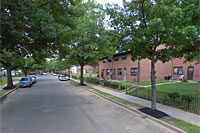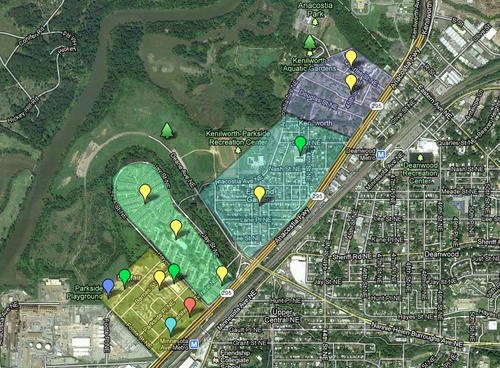Little-known Kenilworth-Parkside is neighborhood to watch
A typical DC resident may never have heard of the Kenilworth-Parkside neighborhood in Ward 7, but the federal government definitely has. It’s betting that an $800,000 investment in a local placemaking initiative can put this small Northeast neighborhood back on the map.
In 2010, Kenilworth-Parkside received $500,000 as one of the Department of Education’s 21 national Promise Neighborhoods. Just last month, the Department of Housing and Urban Development awarded DC a $300,000 Choice Neighborhood planning grant for the same neighborhood.
With these grants in hand, and a major vote of confidence from the federal government, the DC Promise Neighborhood Initiative plans to transform the educational, health, and wellness outcomes for the 7,000 residents living in the isolated, oft-forgotten neighborhood.
For a neighborhood that has been the recipient of two of the Obama Administration’s most celebrated community development efforts, there’s been little fanfare in the city outside this small patch of Ward 7. Fortunately, that’s not holding the DC Promise Neighborhood Initiative (DCPNI) back.
DCPNI is a new 501(c)3 organization led by Irasema Salcido, founder and CEO of the Cesar Chavez Public Charter Schools for Public Policy, which has a Parkside campus. DCPNI organized a permanent Board of Directors in October 2011 and has been working since to pursue its goals for 2012. A January 2012 report by the Urban Institute outlines in great detail how DCPNI plans to transform the neighborhood.
Kenilworth-Parkside sits squeezed between the Anacostia River and DC-295 to the east and west, and a sprawling decommissioned Pepco plant and the District border to its north and south. The disadvantageous geography and years of disinvestment left Kenilworth-Parkside sinking further and further into disrepair.
Despite having Kenilworth Aquatic Gardens and its acres of green space in the neighborhood, Kenilworth-Parkside still shows all of the typical indicators of urban blight.
Statistics on the residents in the DCPNI footprint are dire. Median household incomes are barely half of the city’s median. Rates of teenage births are some of the highest in the nation. Single females head 90% of families.
Yet, at least until now, it’s lacked any kind of investment which many of DC’s now “up-and-coming” neighborhoods have received.
Enter DCPNI. In 2008, Salcido launched the Initiative based on the principles of Geoffrey Canada’s Harlem Children’s Zone. DCPNI launched their efforts after winning funding from the US Department of Education.
The 2012 plan is ambitious. DCPNI is proposing home visits to pregnant women and mothers of young children. They want to build a community library of children’s books. For the neighborhood’s school children, they will launching an experiential learning program to visits to local museums and monuments with directed classroom instruction.
DCPNI, which holds tours of the neighborhood on the fourth Thursday of every month, is perhaps the city’s foremost example of a place-making initiative. They are taking all of the most current research on comprehensive, services-based community development and applying it to one unique geographic area.
DC should keep its eye on Kenilworth-Parkside. Stakeholders of the Choice planning grant will inevitably apply for implementation funding when it becomes available in an effort to revitalize more than 300 units of dilapidated public housing. In June, Educare, a brand-new early childhood education center serving 175 Headstart-eligible children, will open its doors.
Victory Square, a new senior affordable apartment building built by Victory Housing, began accepting applications this week and will open in the spring. And all the while, DCPNI continues to establish partnerships with local businesses and organizations and organize programs that aim to strike at the core of Kenilworth-Parkside’s ills in just the way that Canada tackled a swath of Harlem.
Over the next few years, as the 21 Promise Neighborhoods get to work across the country, community development advocates will learn whether or not federal money can be applied to local community development initiatives successfully and efficiently to improve public health, housing and education outcomes.
Lucky for the DC region, there’s a site right in our backyard to follow, support, and learn more about. You just have to know where to look.


